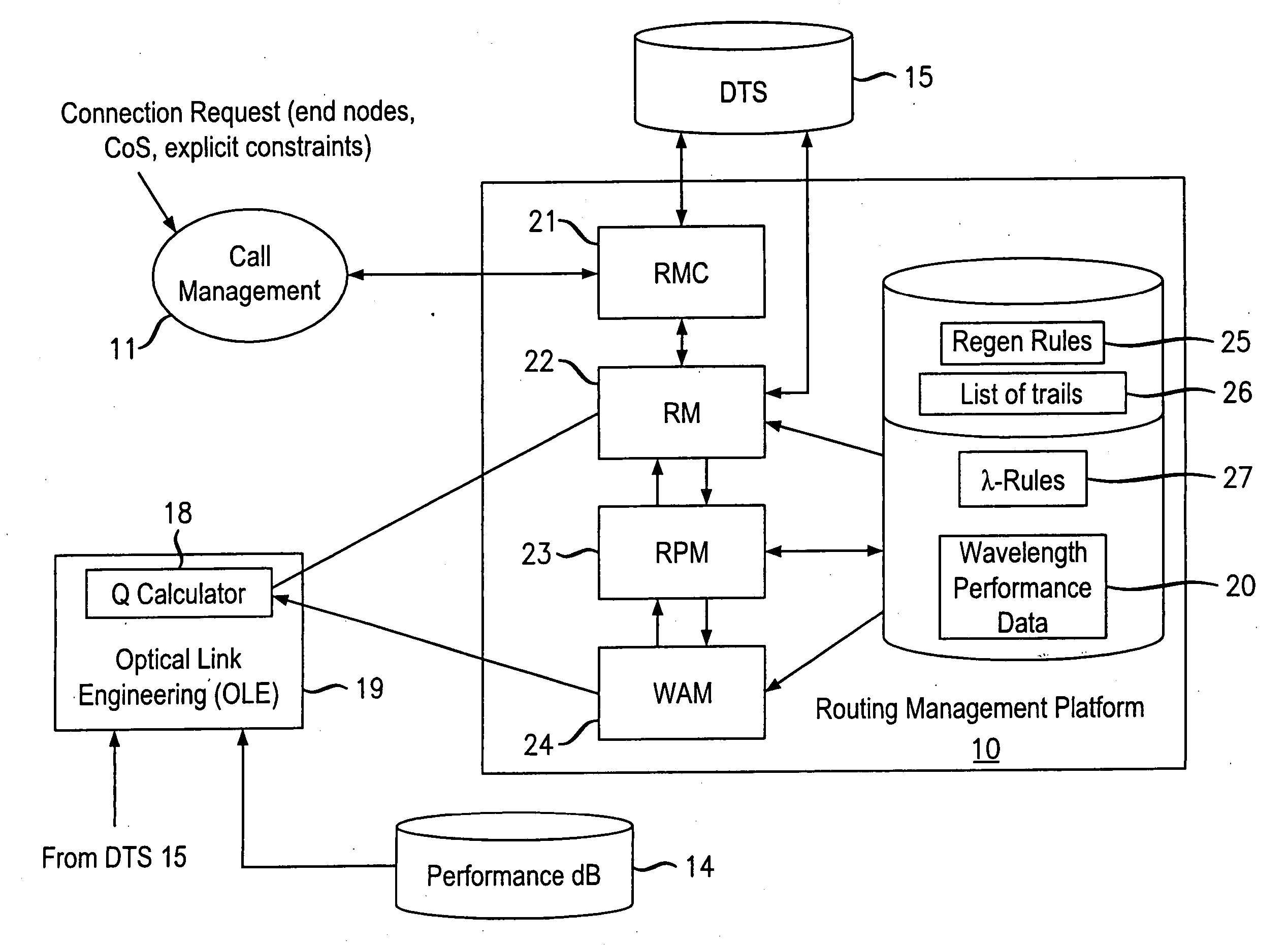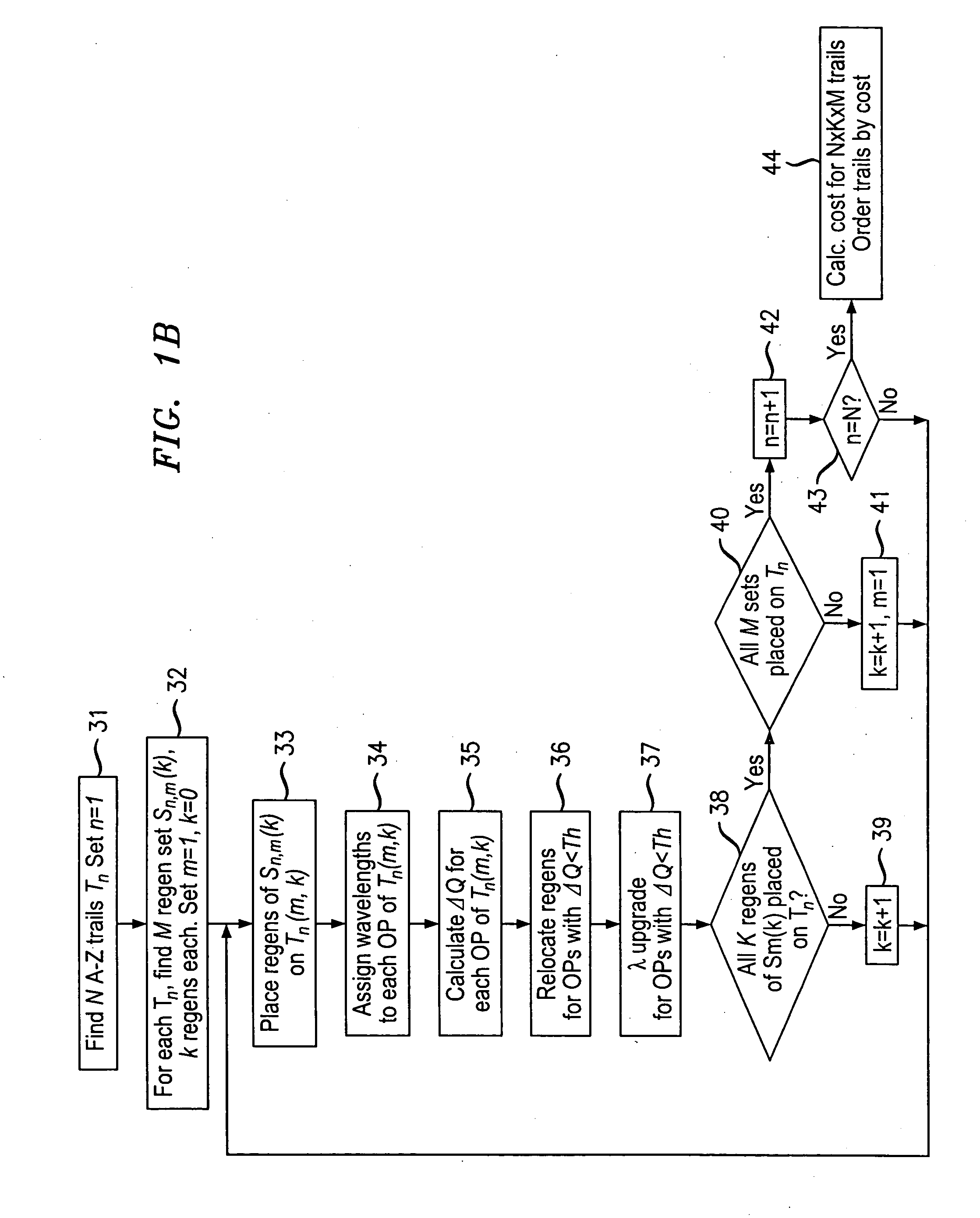Trail engineering in agile photonic networks
a photonic network and trail technology, applied in the field of telecommunication networks, can solve the problems of complex network engineering and planning, scaling-up and/or providing new services in the point-to-point network, and requiring extensive simulation and testing, and achieves the effects of convenient and fast network engineering, convenient selection of trails, and convenient operation
- Summary
- Abstract
- Description
- Claims
- Application Information
AI Technical Summary
Benefits of technology
Problems solved by technology
Method used
Image
Examples
examples
[0111]FIG. 4A shows a heterogeneous trail with nine nodes, L=5352 km, and with the four fiber types SMF, DCF, TWC and LEAF. This trails is used together with FIGS. 3B and 3C for illustrating an example of an initial regenerator placement. Since in this scenario the best fiber type LEAF has the Max_Reach of 4,500 km, there is at least one regenerator needed. Lave for this trail is 5352 / 2=2676 km, considering d=1. As before, let's assume that the initial threshold is 0.3 dB, the assignment threshold is 0.0 dB, and the increment (used later) is 0.4 dB.
[0112] Initially, the regenerator is placed at node N6, since Σ(Σ=L1+L2 L3+L4+L5=2,852 km), is first greater than Lave at node N6, resulting in a first optical path OP1 between nodes N1 and N6 (L1=2,852 km) and a second optical path OP2 between nodes N6 and N9 (L2=2,500 km).
[0113] The trail construction starts with WAM 24 checking for a continuous wavelength for OP1. Let's assume that a continuous wavelength is available in all bins. Th...
PUM
 Login to View More
Login to View More Abstract
Description
Claims
Application Information
 Login to View More
Login to View More - R&D
- Intellectual Property
- Life Sciences
- Materials
- Tech Scout
- Unparalleled Data Quality
- Higher Quality Content
- 60% Fewer Hallucinations
Browse by: Latest US Patents, China's latest patents, Technical Efficacy Thesaurus, Application Domain, Technology Topic, Popular Technical Reports.
© 2025 PatSnap. All rights reserved.Legal|Privacy policy|Modern Slavery Act Transparency Statement|Sitemap|About US| Contact US: help@patsnap.com



